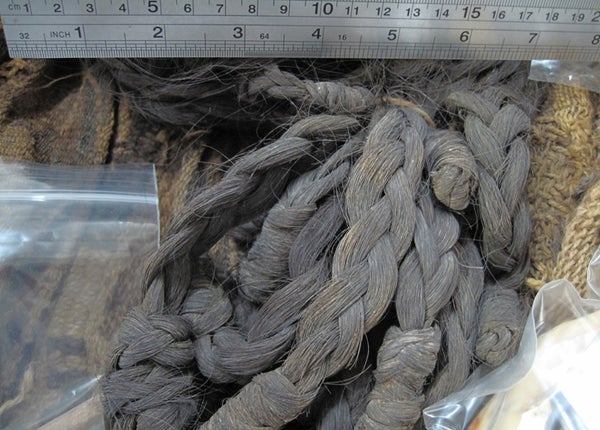Several anthropological studies show that, just like other pre-Hispanic natives, those who inhabited the desert in northern Chile faced periods of food shortages, severe weather conditions, crippling diseases and violence. However, a new analysis of a stress hormone in hair samples from 19 mummies of people who lived between 500 and 1,500 years ago suggests that perhaps not all of them had as stressful an existence as previously thought.
This interpretation “is different from what had been assumed so far,” says Hermann Niemeyer, head of the Laboratory of Organic Chemistry at the Faculty of Sciences of the University of Chile, and one of the authors of the study. Niemeyer and his colleagues took hair samples from 19 mummies of San Pedro de Atacama, five of them from the Middle Period (400 to 1000 AD) and the rest from the Late Intermediate Period (1000 to 1400 AD), and measured the capillary concentration of cortisol, a hormone released in response to real or perceived threats.
Because hair grows on average one centimeter per month, the analysis functions as an indicator of the stress experienced during the natives’ last months of life—and may be an invaluable window into the emotional life of the remote past. Although it is impossible to rule out some degree of degradation caused by decomposition, Niemeyer says the mummies’ hair and other organic remains are extremely well preserved because of the arid San Pedro de Atacama atmosphere. “And cortisol itself is a fairly stable molecule,” he adds.
On supporting science journalism
If you're enjoying this article, consider supporting our award-winning journalism by subscribing. By purchasing a subscription you are helping to ensure the future of impactful stories about the discoveries and ideas shaping our world today.
Researchers also measured the concentration of cortisol in the hair of 19 healthy, non-obese living residents of Santiago de Chile, ranging from 23 to 55 years old. The results were surprising: Cortisol levels proved to be similar in modern and in prehistoric samples. “While the environmental, technological and health conditions in ancient times could be considered restrictive in relation to the conditions of life today, apparently they did not alter the levels of systemic stress of these populations,” the authors wrote in Chungará, a Chilean anthropology magazine. Details of the new work were also presented in April at the 85th Annual Meeting of the American Association of Physical Anthropologists in Atlanta.
The finding contradicts previous studies. Applying a similar methodology in 2009, a team of researchers led by Emily Webb, then at the University of Western Ontario, found that mummies from different places in Peru presented very high stress levels. The team attributed this to food shortages, droughts, interpersonal conflicts and other threats to life. Researchers now assume that—despite all odds—the ancient inhabitants of the Atacama were well adapted to the conditions of the local environment, since human occupation in the area went on for thousands of years.
But this assumption of a low-stress life for the remote Atacama people should not necessarily be extrapolated to the experience of other pre-Hispanic natives. "The diversity of environments and cultural processes along the Andes is so heterogeneous that we must be cautious in expanding our findings to other prehistoric societies in our continent,” warns the study’s lead author, physical anthropologist Rocio Lopez Barrales from the University of Chile. He is currently researching at the Department of Anthropology at Ohio State University.
The application of new techniques, such as the measurement of cortisol in mummies’ hair, "is interesting for providing information on specific aspects,” says Lourdes Marquez Morfin, a bioarchaeologist at the National School of Anthropology and (ENAH) in Mexico, who specializes in society and health in ancient populations and was not involved in the new research. However, she adds that the interpretation in the Atacama study could have been more solid if it had considered a larger number of variables and health indicators.
